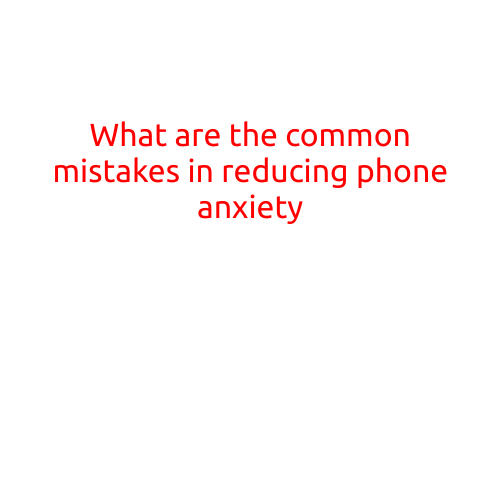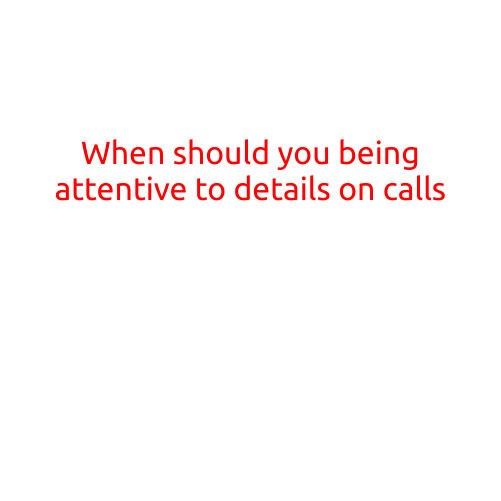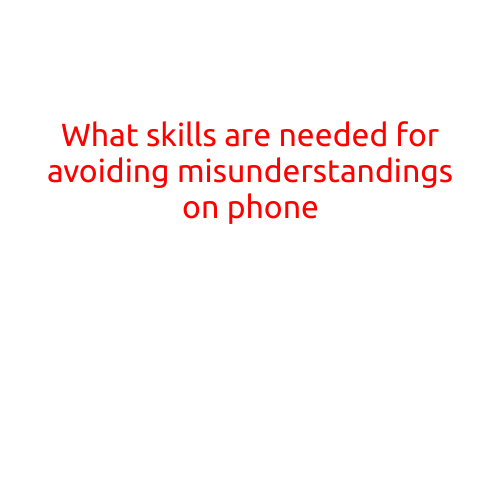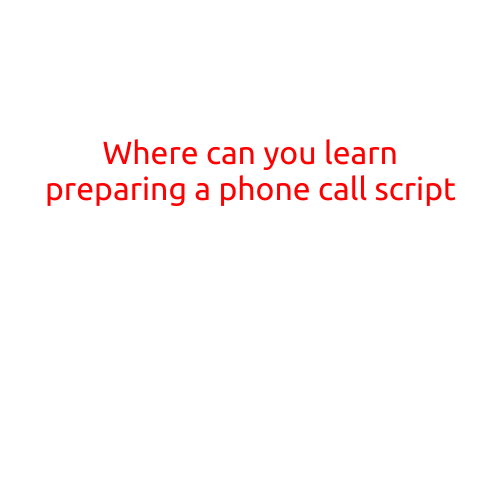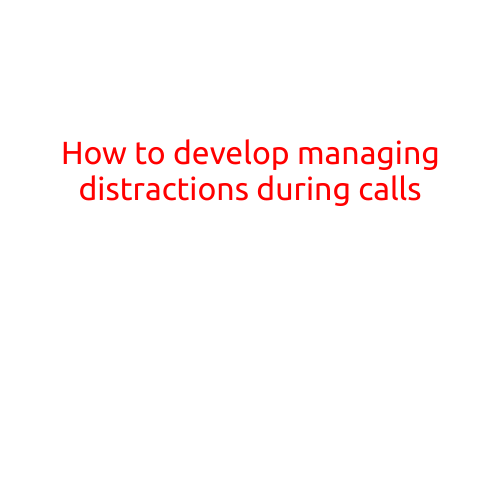
How to Develop Managing Distractions During Calls
In today’s fast-paced work environment, it’s easy to get sidetracked and lose focus during important phone calls. Whether you’re a busy entrepreneur, sales professional, or customer service representative, managing distractions is crucial to maintaining productivity and building strong relationships with clients and customers. In this article, we’ll explore practical tips and strategies to help you develop the skills necessary to manage distractions during calls and stay focused on the conversation.
Understand Your Distractions
Before you can manage distractions, you need to identify what’s causing them. Take some time to reflect on your usual habits and environments during phone calls. Ask yourself:
- What’s the first thing you do when you answer a call? (e.g., check your emails, scroll through social media, or get up to get a snack)
- What sounds or visual stimuli might interrupt your conversation? (e.g., background noise, competing conversations, or notifications)
- Are there any specific times of the day or situations that tend to make you more easily distracted? (e.g., morning rush hour, meetings, or social events)
By raising your awareness of your distractions, you can develop a plan to mitigate their effects.
Create a Conducive Environment
To minimize distractions, it’s essential to create a dedicated space for taking calls. Consider the following:
- Find a quiet, private area with minimal background noise and few visual stimuli
- Use a headset or speakerphone to free up your hands and reduce distractions
- Close unnecessary tabs on your computer and log out of social media
- Turn off notifications on your phone or put it on silent mode
- Remove any visual distractions, such as TVs or billboards, from your workspace
Develop Active Listening Skills
Active listening is the practice of giving your undivided attention to the person speaking. To develop these skills, focus on the following:
- Maintain eye contact, even if you’re having a video call
- Avoid multitasking, such as checking your emails or browsing the internet
- Use verbal cues, like “yes” or “uh-huh,” to show you’re engaged
- Paraphrase and summarize what the speaker is saying to ensure you understand
- Ask open-ended questions to encourage the speaker to share more information
Use Techniques to Stay Focused
Staying focused during calls requires discipline and practice. Try the following techniques:
- Take a few deep breaths before answering the call to calm your mind and focus your attention
- Use visualization techniques to mentally “block out” distractions
- Set a specific goal for the call, such as resolving a specific issue or discussing a particular topic
- Use a timer to keep yourself on track and ensure you’re not getting sidetracked
Mind Your Body Language
Your body language can have a significant impact on your ability to focus during calls. Make sure to:
- Sit comfortably and maintain good posture
- Avoid fidgeting or tapping your feet, which can be distracting
- Keep your hands still, especially if you’re using a headset or speakerphone
- Smile and use positive facial expressions to show you’re engaged
Practice, Practice, Practice
Like any skill, managing distractions during calls requires practice. Start by setting aside time each day to take focused calls. As you become more comfortable, gradually increase the duration and frequency of your calls.
Conclusion
Managing distractions during calls is a crucial skill for anyone who communicates over the phone. By understanding your distractions, creating a conducive environment, developing active listening skills, using techniques to stay focused, mind your body language, and practicing regularly, you can improve your ability to stay focused and productive during phone calls. Remember, the key to success is awareness, discipline, and practice. With time and effort, you’ll become a pro at managing distractions and making the most of your phone calls.

